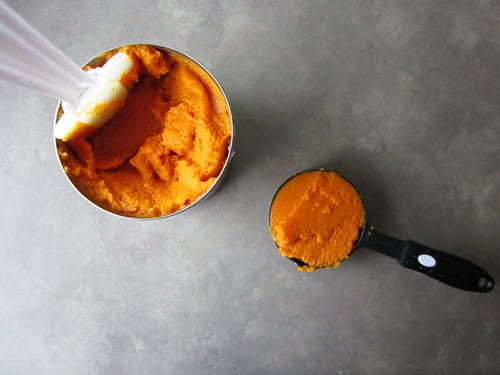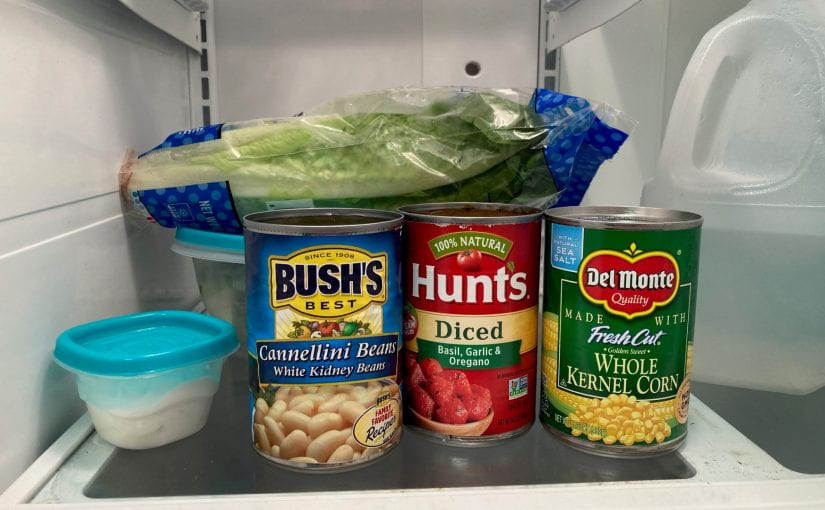Does this sound familiar?
You find a recipe you want to try. You buy the ingredients, make it, and it’s good, no problems getting anyone to eat it.
But the ingredient list left you with unused portions of canned or fresh food—maybe something that’s not in your usual cooking rotation. They are promptly and properly deposited in the refrigerator, but eventually get shoved to the back and forgotten. A month later when you think about making that new recipe again…too late! It looks like a science experiment, and the leftover ingredients are no longer safe to eat. And when you look, you see that they have some friends from, well, you’re not even sure when.
It can be disheartening to waste food that way, not to mention bad for the food budget.
But a few small changes can help avoid that situation! Leftover ingredients may need a little more of your attention to be put to good use.

Do more meal planning
If planning every meal and snack for a week sounds overwhelming, do a “lite” version:
- have a basic idea of your meals—ones that use ingredients you keep on hand regularly for your go-to recipes (ground beef during the week will be either hamburgers or mini meatloaves; Thursday is pasta and salad night; yogurt-fruit-granola parfaits for snacks; purchase at least one vegetable for every day of the week, you can decide each day which you’re in the mood to feature as part of dinner)
- …but give some extra thought to the “special” ingredient. As soon as you know you have extras to use—the recipe calls for a 1.5 cups of chicken broth but you discover the choice of boxes at the supermarket are 8 ounces or 32 ounces—give (or plan) some time to think about another way to eat it.
- Have a place to write down your “special” meal ideas (a note in your phone, a piece of note paper held to the fridge with a magnet, a small chalkboard hanging somewhere in your kitchen). Keep in mind that a shared place encourages the rest of the household to participate in the meal planning process.

- If you’re stuck for ideas, have a reliable website or book to find healthy, tasty, affordable recipes. A recipe you choose for the special ingredient may become a new go-to! Try out the recipes at the CCE Schoharie and Otsego website; they’re all healthy, affordable, easy to make, and are used in our nutrition education classes.
Be a better partner to your refrigerator
When you put the leftovers in the fridge, be sure to put a date on them. If they’re still in the original packaging, use a marker or pen to write on them. If saving in a re-useable container, write the date on a piece of masking tape and stick it to the container.
Have a space in the fridge where leftovers go. Be sure to check that area frequently (once a week at a minimum) to avoid losing track.

Canned pumpkin: a real-life example
One of my new favorite recipes is Pumpkin Pancakes, which I discovered after becoming a nutrition educator—by the way, those pancakes are a delicious, easy way to add in some whole grains and veggies to your morning! The recipe uses ¾ cup pumpkin, not a whole can. I didn’t regularly use canned pumpkin, and did not immediately have any ideas on how to use the rest.
I marked the top of the can with the date (we have one of those “smooth edge” can openers that allow the top to be put back on for storage) and put it in bottom shelf of the fridge next to the leftover chicken from the night before, and made a reminder note in my “to-do” list in my phone.
That evening when I had time to give it some attention, I found several recipe ideas that don’t take a whole can of pumpkin:
- We had enjoyed a ready-made pumpkin pasta sauce some weeks back, and my partner suggested finding a copy-cat recipe—it’s always a good idea to get the buy-in of the other eaters in the household
- I remembered another recipe I had seen in passing at work, for Pumpkin Pie Spice Milk (see the recipe in a previous Life’s Solutions blog post).
- Searching through the recipes at the CCE Schoharie and Otsego website, and the recipe section of the MyPlate website, I found a couple more ideas I’d like to try some time: Pumpkin Mac & Cheese for One, and Pumpkin Ricotta Stuffed Shells.
I sent myself an email with the links to the recipes I found, with a mental note that pasta night that week would use the pumpkin pasta sauce. Of course, in my search I found other interesting recipes that called for a whole can of pumpkin—but that’s a project for a different day.
If you are interested in more helpful tips or nutrition information…
…or to participate in our free nutrition/cooking classes, visit our website or contact our nutrition educators: Michelle Leveski, mml39@cornell.edu, 518-234-4303 x115 or Kimberly Ferstler, kmf239@cornell.edu, 518-234-4303 x 120.

